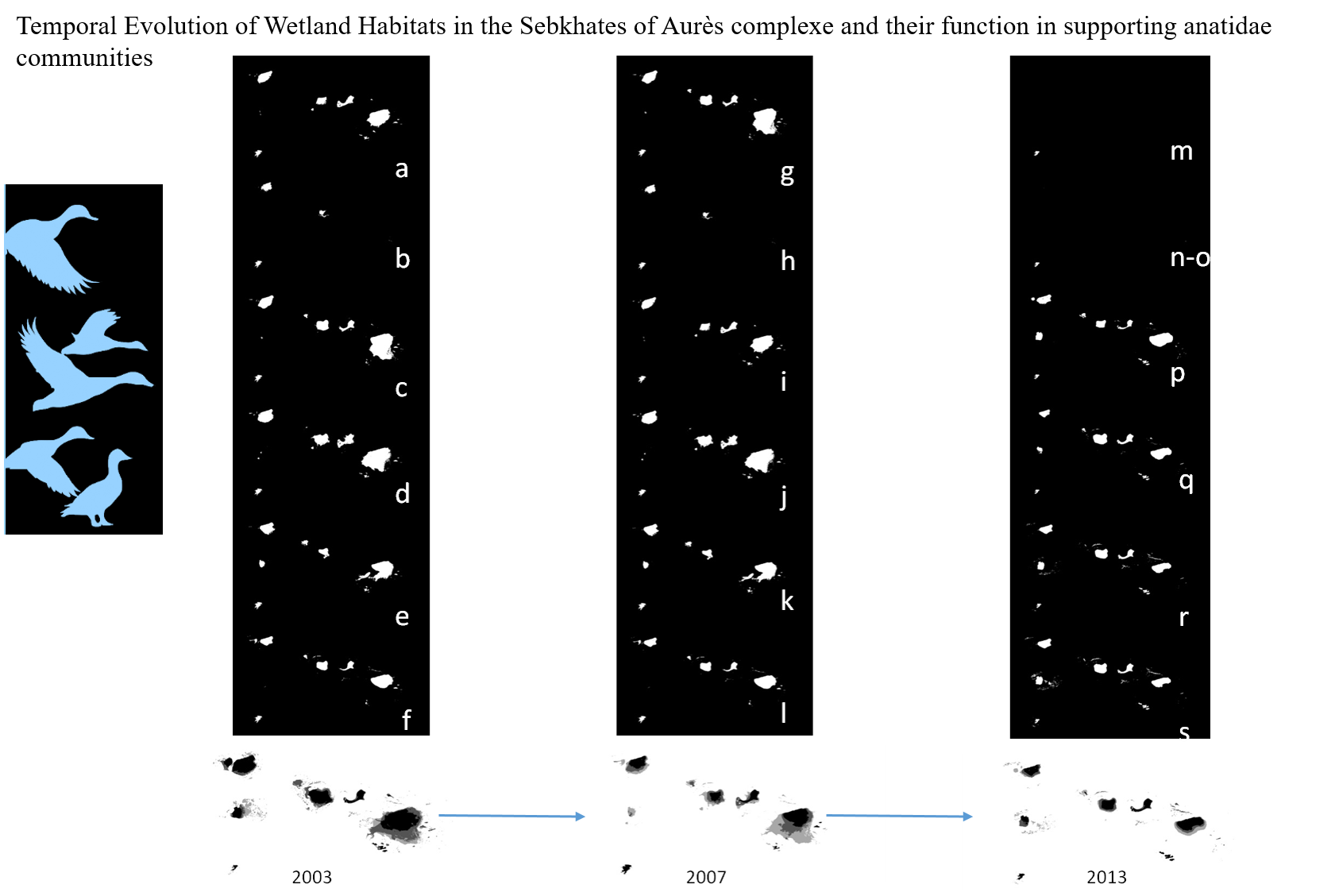-
VolumeVolume 27 (2025)
-
Issue
-
Pages1-11
- gnest_07763_final.pdf
-
Paper IDgnest_07763
-
Paper statusPublished

By employing spatial observation methods and analyzing satellite imagery on both intra- and inter-annual scales, we were able to delineate the boundaries of the Sebkhet of Aurès Wetlands Complex (SAWC) located in northeastern Algeria. The study focused on seven major wetlands, encompassing a total surface area of 48,540 hectares, with altitudes ranging from 370 to 900 meters, which supports a high level of ecological diversity. The treatment, by classifying the water surfaces and the wet surfaces present on 19 images used, enabled to visualize the variation within the timeframe of each site submersion. The results indicated that precipitation is the primary factor driving these variations. In 2003, an annual precipitation of 502.06 mm corresponded to a total flooded area of 30,305.15 hectares. By 2007, with rainfall dropping to 340.7 mm, the inundated surface declined to 27,090.14 hectares, marking a 10.6% reduction. This downward trend continued in 2013, when precipitation further decreased to 304.8 mm, and the flooded area contracted significantly to 16,736.16 hectares, a 44.8% decrease over the 11-year period. This study investigates whether fluctuations in wintering duck numbers are linked to both total wetland area and the extent of main habitat types. Population counts from 2003, 2007, and 2013 were compared with temporal changes in open‑water and flood‑prone surfaces, derived from satellite imagery and GIS analysis. The results indicated that, besides the surface area of flooded zones being a key condition for supporting large numbers of waterfowl, factors such as safety, the absence of disturbances and predators, and the availability of food are also crucial in attracting these species.
Total file downloads: 5